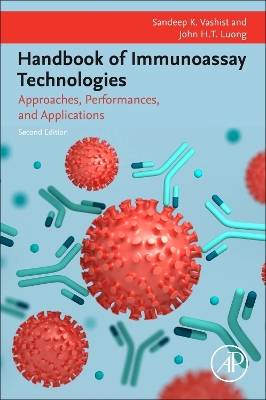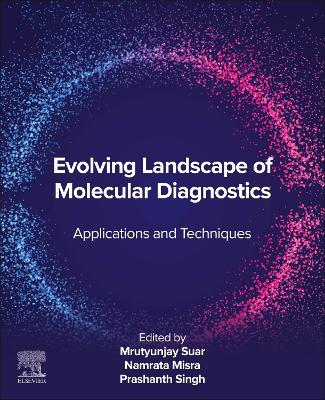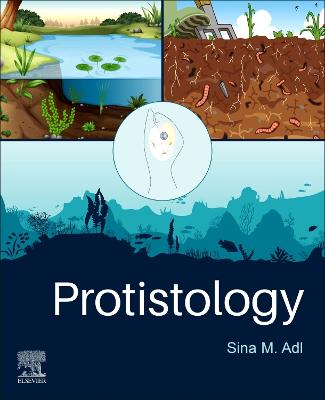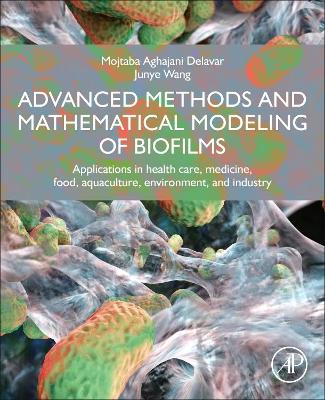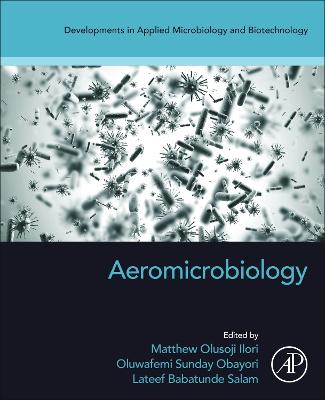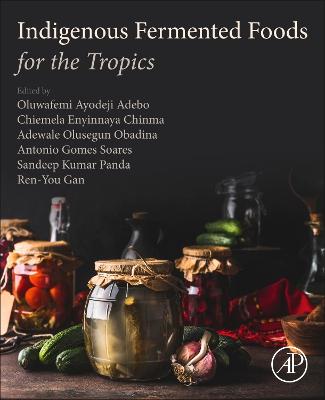Understanding Microbial Biofilms
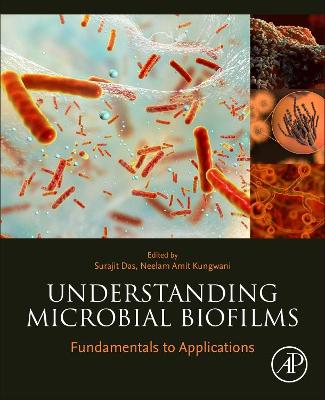 -10%
portes grátis
-10%
portes grátis
Understanding Microbial Biofilms
Fundamentals to Applications
Das, Surajit; Kungwani, Neelam Amit
Elsevier Science & Technology
10/2022
774
Mole
Inglês
9780323999779
15 a 20 dias
Descrição não disponível.
Section A: Introduction to biofilms
1. Marine biofilms: Bacterial diversity and dynamics
2. Cyanobacterial biofilms: Perspectives from Origin to Applications
3. From understanding bacterial interactions to developing bactericidal surfaces: Applications of analytical techniques
4. Microbial biofilms: Unravel their potential for agricultural applications under agro-ecosystem
5. Chemotaxis and rhizobacterial biofilm formation in plant-microbe interaction
6. Scanning electron microscopy and variable-pressure SEM application in biofilm imaging
7. Aspects of biofilms on medical devices
Section B: Biofilms in nature
8. Metagenomic analysis of electroactive microorganisms in corrosion: Impact of the corrosive biofilms in the oil industry
9. Biofilms in dairy industry
10. Microalgal biofilm and their prospective application for wastewater treatment and biofuel production
11. Biochemical and molecular mechanisms of sulfate-reducing bacterial biofilms
12. Biofilms and their role in corrosion in marine environments
13. Natural biofilms: Structure, development, and habitats
Section C: Biofilm lifestyle of various microorganisms and its control
14. Role of biofilms in hospitalacquired infections (HAIs)
15. Implication of Vibrio biofilms in human and seafood sector
16. Candida: Biofilm formation and antifungal resistance
17. Removal and control of biofilms in wounds
18. Microbial biofilms: A persisting public health challenge
19. Biofilms in antibiotic resistance and pathogenesis in relation to foodborne infection and control strategies
20. Biofilms associated with biomedical implants and active therapies
Section D: Molecular and biochemical aspect of microbial biofilms
21. Influence of bacterial cell wall modulating genes and enzymes on biofilm formation with special emphasis on the role of DD-carboxypeptidases
22. Role of small regulatory RNAs in microbial pathogenesis and biofilm formation: Emerging role as potential drug targets
23. Genetic basis of biofilm formation and their role in antibiotic resistance, adhesion, and persistent infections in ESKAPE pathogens
24. The emergence of predominance in the constitutive microflora of dairy membrane biofilm
25. Molecular basis of cariogenic biofilm and infections
Section E: Biofilms and pathogenesis
26. Salmonella biofilm and its importance in the pathogenesis
27. Mycobacterial biofilm:Structure and its functional relevance in the pathogenesis
28. Streptococcus pneumoniae biofilms and human infectious diseases: A comprehensive review
29. Oral biofilms: Architecture and control
30. Molecular mechanisms of Acinetobacter baumannii biofilm formation its impact on virulence, persistence, and pathogenesis
31. Polymicrobial biofilms: Impact on fungal pathogenesis
32. Molecular mechanism of biofilm formation of pathogenic micororganisms and their role in host pathogen interaction
33. Pathogenic biofilm in environmental and industrial setups and their public health threats
34. Biofilm formation: A well-played game in bacterial pathogenesis
Section F: Application of microbial biofilms
35. Plant growth promoting rhizobacteria and their biofilms in promoting sustainable agriculture and soil health
36. Antagonistic Bacilli as a prospective probiotics against pathogenic biofilms
37. Use of bacterial biofilms to produce high added-value compounds
38. Biofilms as sustainable tools for environmental biotechnologies: An interdisciplinary approach
39. Use of biofilm bacteria to enhance overall microbial fuel cell performance
40. Industrial applications and implications of biofilms
1. Marine biofilms: Bacterial diversity and dynamics
2. Cyanobacterial biofilms: Perspectives from Origin to Applications
3. From understanding bacterial interactions to developing bactericidal surfaces: Applications of analytical techniques
4. Microbial biofilms: Unravel their potential for agricultural applications under agro-ecosystem
5. Chemotaxis and rhizobacterial biofilm formation in plant-microbe interaction
6. Scanning electron microscopy and variable-pressure SEM application in biofilm imaging
7. Aspects of biofilms on medical devices
Section B: Biofilms in nature
8. Metagenomic analysis of electroactive microorganisms in corrosion: Impact of the corrosive biofilms in the oil industry
9. Biofilms in dairy industry
10. Microalgal biofilm and their prospective application for wastewater treatment and biofuel production
11. Biochemical and molecular mechanisms of sulfate-reducing bacterial biofilms
12. Biofilms and their role in corrosion in marine environments
13. Natural biofilms: Structure, development, and habitats
Section C: Biofilm lifestyle of various microorganisms and its control
14. Role of biofilms in hospitalacquired infections (HAIs)
15. Implication of Vibrio biofilms in human and seafood sector
16. Candida: Biofilm formation and antifungal resistance
17. Removal and control of biofilms in wounds
18. Microbial biofilms: A persisting public health challenge
19. Biofilms in antibiotic resistance and pathogenesis in relation to foodborne infection and control strategies
20. Biofilms associated with biomedical implants and active therapies
Section D: Molecular and biochemical aspect of microbial biofilms
21. Influence of bacterial cell wall modulating genes and enzymes on biofilm formation with special emphasis on the role of DD-carboxypeptidases
22. Role of small regulatory RNAs in microbial pathogenesis and biofilm formation: Emerging role as potential drug targets
23. Genetic basis of biofilm formation and their role in antibiotic resistance, adhesion, and persistent infections in ESKAPE pathogens
24. The emergence of predominance in the constitutive microflora of dairy membrane biofilm
25. Molecular basis of cariogenic biofilm and infections
Section E: Biofilms and pathogenesis
26. Salmonella biofilm and its importance in the pathogenesis
27. Mycobacterial biofilm:Structure and its functional relevance in the pathogenesis
28. Streptococcus pneumoniae biofilms and human infectious diseases: A comprehensive review
29. Oral biofilms: Architecture and control
30. Molecular mechanisms of Acinetobacter baumannii biofilm formation its impact on virulence, persistence, and pathogenesis
31. Polymicrobial biofilms: Impact on fungal pathogenesis
32. Molecular mechanism of biofilm formation of pathogenic micororganisms and their role in host pathogen interaction
33. Pathogenic biofilm in environmental and industrial setups and their public health threats
34. Biofilm formation: A well-played game in bacterial pathogenesis
Section F: Application of microbial biofilms
35. Plant growth promoting rhizobacteria and their biofilms in promoting sustainable agriculture and soil health
36. Antagonistic Bacilli as a prospective probiotics against pathogenic biofilms
37. Use of bacterial biofilms to produce high added-value compounds
38. Biofilms as sustainable tools for environmental biotechnologies: An interdisciplinary approach
39. Use of biofilm bacteria to enhance overall microbial fuel cell performance
40. Industrial applications and implications of biofilms
Este título pertence ao(s) assunto(s) indicados(s). Para ver outros títulos clique no assunto desejado.
Biofilms; microbial biofilms; Quorum sensing; extremophiles; extracellular polymeric substances; rhizosphere; pathogenesis; metagenomics
Section A: Introduction to biofilms
1. Marine biofilms: Bacterial diversity and dynamics
2. Cyanobacterial biofilms: Perspectives from Origin to Applications
3. From understanding bacterial interactions to developing bactericidal surfaces: Applications of analytical techniques
4. Microbial biofilms: Unravel their potential for agricultural applications under agro-ecosystem
5. Chemotaxis and rhizobacterial biofilm formation in plant-microbe interaction
6. Scanning electron microscopy and variable-pressure SEM application in biofilm imaging
7. Aspects of biofilms on medical devices
Section B: Biofilms in nature
8. Metagenomic analysis of electroactive microorganisms in corrosion: Impact of the corrosive biofilms in the oil industry
9. Biofilms in dairy industry
10. Microalgal biofilm and their prospective application for wastewater treatment and biofuel production
11. Biochemical and molecular mechanisms of sulfate-reducing bacterial biofilms
12. Biofilms and their role in corrosion in marine environments
13. Natural biofilms: Structure, development, and habitats
Section C: Biofilm lifestyle of various microorganisms and its control
14. Role of biofilms in hospitalacquired infections (HAIs)
15. Implication of Vibrio biofilms in human and seafood sector
16. Candida: Biofilm formation and antifungal resistance
17. Removal and control of biofilms in wounds
18. Microbial biofilms: A persisting public health challenge
19. Biofilms in antibiotic resistance and pathogenesis in relation to foodborne infection and control strategies
20. Biofilms associated with biomedical implants and active therapies
Section D: Molecular and biochemical aspect of microbial biofilms
21. Influence of bacterial cell wall modulating genes and enzymes on biofilm formation with special emphasis on the role of DD-carboxypeptidases
22. Role of small regulatory RNAs in microbial pathogenesis and biofilm formation: Emerging role as potential drug targets
23. Genetic basis of biofilm formation and their role in antibiotic resistance, adhesion, and persistent infections in ESKAPE pathogens
24. The emergence of predominance in the constitutive microflora of dairy membrane biofilm
25. Molecular basis of cariogenic biofilm and infections
Section E: Biofilms and pathogenesis
26. Salmonella biofilm and its importance in the pathogenesis
27. Mycobacterial biofilm:Structure and its functional relevance in the pathogenesis
28. Streptococcus pneumoniae biofilms and human infectious diseases: A comprehensive review
29. Oral biofilms: Architecture and control
30. Molecular mechanisms of Acinetobacter baumannii biofilm formation its impact on virulence, persistence, and pathogenesis
31. Polymicrobial biofilms: Impact on fungal pathogenesis
32. Molecular mechanism of biofilm formation of pathogenic micororganisms and their role in host pathogen interaction
33. Pathogenic biofilm in environmental and industrial setups and their public health threats
34. Biofilm formation: A well-played game in bacterial pathogenesis
Section F: Application of microbial biofilms
35. Plant growth promoting rhizobacteria and their biofilms in promoting sustainable agriculture and soil health
36. Antagonistic Bacilli as a prospective probiotics against pathogenic biofilms
37. Use of bacterial biofilms to produce high added-value compounds
38. Biofilms as sustainable tools for environmental biotechnologies: An interdisciplinary approach
39. Use of biofilm bacteria to enhance overall microbial fuel cell performance
40. Industrial applications and implications of biofilms
1. Marine biofilms: Bacterial diversity and dynamics
2. Cyanobacterial biofilms: Perspectives from Origin to Applications
3. From understanding bacterial interactions to developing bactericidal surfaces: Applications of analytical techniques
4. Microbial biofilms: Unravel their potential for agricultural applications under agro-ecosystem
5. Chemotaxis and rhizobacterial biofilm formation in plant-microbe interaction
6. Scanning electron microscopy and variable-pressure SEM application in biofilm imaging
7. Aspects of biofilms on medical devices
Section B: Biofilms in nature
8. Metagenomic analysis of electroactive microorganisms in corrosion: Impact of the corrosive biofilms in the oil industry
9. Biofilms in dairy industry
10. Microalgal biofilm and their prospective application for wastewater treatment and biofuel production
11. Biochemical and molecular mechanisms of sulfate-reducing bacterial biofilms
12. Biofilms and their role in corrosion in marine environments
13. Natural biofilms: Structure, development, and habitats
Section C: Biofilm lifestyle of various microorganisms and its control
14. Role of biofilms in hospitalacquired infections (HAIs)
15. Implication of Vibrio biofilms in human and seafood sector
16. Candida: Biofilm formation and antifungal resistance
17. Removal and control of biofilms in wounds
18. Microbial biofilms: A persisting public health challenge
19. Biofilms in antibiotic resistance and pathogenesis in relation to foodborne infection and control strategies
20. Biofilms associated with biomedical implants and active therapies
Section D: Molecular and biochemical aspect of microbial biofilms
21. Influence of bacterial cell wall modulating genes and enzymes on biofilm formation with special emphasis on the role of DD-carboxypeptidases
22. Role of small regulatory RNAs in microbial pathogenesis and biofilm formation: Emerging role as potential drug targets
23. Genetic basis of biofilm formation and their role in antibiotic resistance, adhesion, and persistent infections in ESKAPE pathogens
24. The emergence of predominance in the constitutive microflora of dairy membrane biofilm
25. Molecular basis of cariogenic biofilm and infections
Section E: Biofilms and pathogenesis
26. Salmonella biofilm and its importance in the pathogenesis
27. Mycobacterial biofilm:Structure and its functional relevance in the pathogenesis
28. Streptococcus pneumoniae biofilms and human infectious diseases: A comprehensive review
29. Oral biofilms: Architecture and control
30. Molecular mechanisms of Acinetobacter baumannii biofilm formation its impact on virulence, persistence, and pathogenesis
31. Polymicrobial biofilms: Impact on fungal pathogenesis
32. Molecular mechanism of biofilm formation of pathogenic micororganisms and their role in host pathogen interaction
33. Pathogenic biofilm in environmental and industrial setups and their public health threats
34. Biofilm formation: A well-played game in bacterial pathogenesis
Section F: Application of microbial biofilms
35. Plant growth promoting rhizobacteria and their biofilms in promoting sustainable agriculture and soil health
36. Antagonistic Bacilli as a prospective probiotics against pathogenic biofilms
37. Use of bacterial biofilms to produce high added-value compounds
38. Biofilms as sustainable tools for environmental biotechnologies: An interdisciplinary approach
39. Use of biofilm bacteria to enhance overall microbial fuel cell performance
40. Industrial applications and implications of biofilms
Este título pertence ao(s) assunto(s) indicados(s). Para ver outros títulos clique no assunto desejado.

